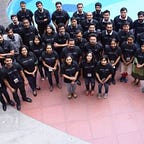Increasing Water Footprint - A Concern for all!
World water day reminds us of the importance of water in our lives. However, we should also be aware of the necessity of water for the remaining 364 days of the year. Today, the growing water scarcity around us makes us think deeply about water footprints for our future and present usage. Research shows that at present industrial water consumption is the highest. Here we will look at the topmost water-consuming industries on the planet.
Textile Industry
Fashion has affected the ecosystem worldwide both directly and indirectly. Today, many people want to be in line with the new trends in fashion. The textile industry uses a lot of water in its manufacturing process, which includes spinning, dyeing, and finishing. A pair of jeans made conventionally (with a standard weight of 1 kg) uses about 10,850 liters of water. According to statistics, 85% of the water used in textile processing goes into dyeing. This leads to running off of the water that remains unused.
Agriculture
India is land of farmers with over 70% of rural households still depending primarily on agriculture. Globally, in this sector, irrigation is the largest water consumer. This sector uses water in a diverse way which includes- irrigation, pesticide, fertilizer application, sustaining the livestock (domesticated animals), and food preservation like crop cooling. The amount of water used in producing the daily food needs of one person is around 3,000 liters.
Meat Production
India has always been known for its diverse livestock-raising techniques. The global water footprint of livestock production now accounts for nearly one-third of the total water footprint. It takes more than 2,400 gallons of water to produce 1 pound of meat. The use of water is massive when compared to agriculture. It takes 24–28 months for livestock to reach the desired marketplace weight.
Food & Beverage Industry
A day’s worth of food for a household of four requires approximately 25,000 liters of water to grow and produce. Food and beverage companies are sensitive towards their customers. As a result, a lot of water is used in day-to-day operations, from cleaning raw materials to the incorporation of the recipe. Water is required in every process from production, refrigeration, steam generation, to cleaning purposes.
Automotive Industry
With the increasing growth seen in the world population, it’s estimated that in the next 50 years the population is going to expand 40–50%. It is estimated that the production of one car uses 40,000 gallons of water. In the production process, a large quantity of water is used in surface treatment and coating, washing, rinsing, hosing, painting spray booths, air-conditioning systems, and cooling.
Paper and Pulp Industry
As we have moved towards digitization today the usage of paper has also reduced to a large extent when compared to a few years back. Usage of paper still exists as we still use it in offices, schools, colleges, homes, etc. The pulp and paper manufacturing process requires water throughout. A single sheet of A4 paper uses around 20 liters of water during its production phase. Water is required in almost every part of the process from digesting wood chips, making fiber slurries, to washing rollers and machines.
…
While it has long been recommended that reduction in water consumption can solve water footprint to a large extent in various spheres. Adopting ways of saving water like collecting and reusing wastewater is much more rewarding as it saves considerably more water. Industries can recycle the wastewater by treating the water and using it within the industrial facility which helps in controlling water pollution discharges.
